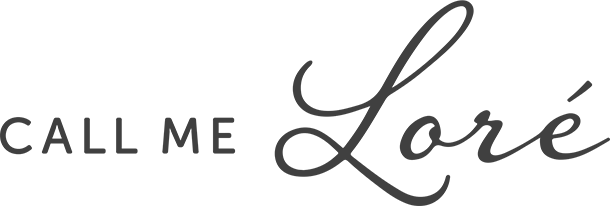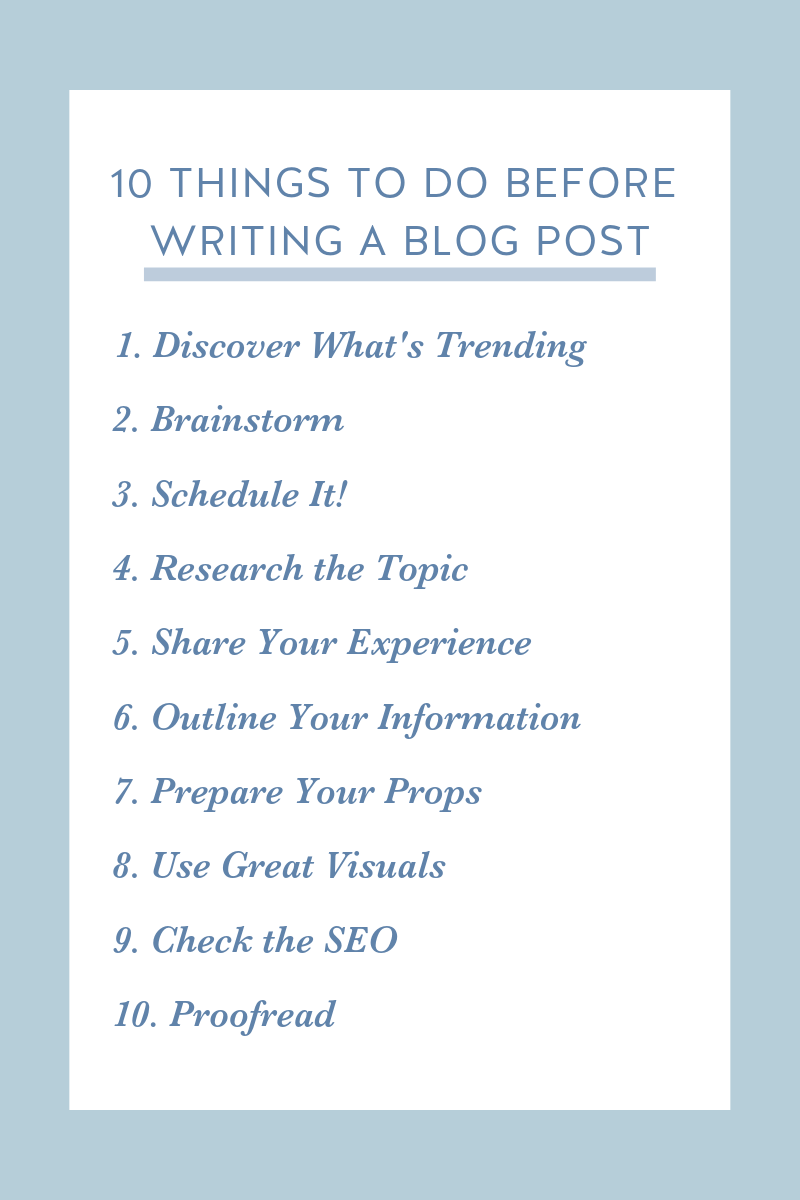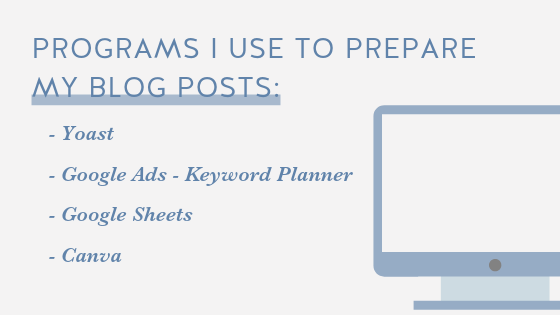
I love blogging. Not only does it connect me with so many amazing people (yes, that includes you!), but it allows me to share my passions and help me follow yours as well. I started blogging after we started Bloguettes (now Wela Creative Studio) as a way to do what I love most which is share about the things I love and share about my life in a way that can inspire others. Through it, I focus on sharing my philosophy which is: “Today I can be better than I was yesterday, in all aspects of my life.” The content I share is a reflection of that. As I go through life and am faced with the question of how I can be better than I was yesterday?, I work to find the answer that works best for me. Then I like to share it with all of you in hopes that it can help you too! Whether it’s business, health, or motherhood, I’m always curious and I don’t settle. I am constantly evolving and improving and I love sharing that journey with you.
Through the journey of creating the blog, I’ve learned many lessons… some the hard way. I’ve learned that a lot of planning and organization must go into creating a blog post. If I don’t plan, it becomes difficult for my blog to be found by others and also trying to write content and come up with blog posts on the fly is very complicated haha! From my experience, I’ve learned things like SEO tips, how to match things that I like to talk about with things that are being searched by others, and some of the best ways to organize what I want to say in the post before I publish it.
If you need help getting your blog in front of your audience, keep reading! I share the 10 things I do before writing a blog post to help you get it in front of your desired audience!
1. Discover What’s Trending
Stuck on what to write about? Google Ads Keyword Planner is here to help. The Google keyword tool is an amazing source of information and I highly recommend it. When using it, input your keyword or topic and search for new keyword ideas so you know what people are searching most around your topic of interest. For example, if you know you want to write about Matcha, search for related keywords concerning ‘matcha’. You might find that a lot of people are looking for ‘matcha recipes’. If that’s the case, it might be a good idea for you to not just write about why matcha is so amazing, but also include your favorite matcha recipes. Blogging essentially is about achieving the balance of what you want to write about with what people are actually looking for.
2. Brainstorm
Once I have done some research on Google Keyword Planner, I brainstorm how the topic can be best shared and how can it be the most helpful for my readers. For example, in some cases, it makes the most sense to do some research on the topic and then share it with my audience. Other times, I decide it’s best to share my own experience. However, what it ultimately comes down to is how you can provide the best knowledge to your readers. Ask yourself questions like:
- What knowledge can you share?
- What products are recommended for that topic?
- Where can they buy them?
- How have they worked for me?
Answering these will make the content more useful for your readers and ultimately encourage them to come back to your site later!
3. Schedule It In Your Editorial Calendar
After I’ve established a topic that I want to write about, the next step is to schedule it. Even before I begin writing anything, I make sure I have a deadline to work towards. One key aspect of blogging is providing your followers with consistent content. Making this plan allows you to work ahead so you always have something prepared. It’s recommended to plan your editorial calendar at least a month in advance so you have time not just to write, but take pictures and get anything else you need prepared. I recommend using something as simple as Google Sheets for your editorial calendar; it’s what I use and I really like it! But if you want a more professional tool, you can use a WordPress Plugin or Trello!
4. Research the Topic
Before I write something, I want to make sure I know as much about it as possible. Being a Matcha lover doesn’t make me a matcha expert, right? So I want to share the best content I can in addition to my own personal point of views. It’s even helpful to see what other bloggers are saying about the topic, or what they aren’t saying! Finding a niche that isn’t being discussed can help you stand out in the topic you are writing about. I also try to solve problems a lot of people are facing. For example, I wrote a post on how to grow your eyelashes after having extensions. That post alone gets more than 10k views a month because I am solving a problem a lot of us are facing, and provide for a solution to help it.
5. Share My Experience
Not only is it important to find research, but I also like to share my personal experience in my blog posts. As I said, I am always looking for ways to make myself and my life better than the day before, so I’m trying a lot of different solutions to problems before I find something that works. That can range from makeup products to business advice. If I find something that solves my problem and I like it, I share it with you on the blog, because I know you all will enjoy it too. 🙂
6. Outline Your Information
Making an outline helps make sure that all the information I want to include is organized and easy to understand. These don’t have to be overly complicated; the main purpose is to make sure the flow of your blog post makes sense to the reader. These days, readability is just as important as SEO. If readers just look at a huge blog of content, they won’t read! Make sure you break up your content using titles, headlines, bullet points, etc. Anything that makes reading the content easier!
7. Prepare Your Props
If your blog post is highlighting a recipe or showing an outfit, make sure you have all the pieces and/or ingredients. Do this before you write it to make sure you stay on schedule. This may include going to the grocery store to buy all of your ingredients or browsing your closet for a specific outfit. If you don’t have these ready for photos, it can set you back on the schedule you’ve created. When blogging, it’s important to know your strengths. If you are a great writer but not good with photos, find someone on Instagram to collaborate with and help each other. Maybe they can take your pictures in exchange for some promotion on your blog or Instagram!
8. Use Great Visuals
Visuals are key to help break up text in a blog post and can help demonstrate the point you are trying to make. It’s all about inspiration and aspiration. Readers will be more attracted to your post if it’s visually appealing. It will also increase your ‘time on page’ and decrease your ‘bounce rate’. There are two ways I like to include images.
Photos
Include photos that correspond to your topic. For example, show an image of the outfit you put together, or of the ingredients you used for the recipe. Something simple that adds to what you are writing about. Don’t think you need a professional to take your photos, either. iPhone photos work great! Just make sure they’re clear and have good lighting. It’s also important that you have a consistent editing style for your photos that go with your brand.
Graphics
Sometimes my topic doesn’t have any relevant photo opportunities. This is a great time to create graphics. Canva is an easy to understand program that makes some amazing graphics! They even a “Free” plan you can use!
9. Check the SEO
What is SEO? SEO stands for Search Engine Optimization. Put simply, it means making sure your blog post has words and phrases that people are specifically looking for in different search engines! (like Yahoo, Google, etc.) But how do you know what people are searching for, and how can you make sure your blog post covers that? I’m glad you asked! This is where a few of my favorite software come in.
Google Ads – Keyword Planner
This program from Google Ads is helpful for both finding topics and establishing keywords for each post. Here’s how you can use it:
- Click here to create an account and sign in.
- After you have signed in, click “Find New Keywords”. Here, you can type in the topic or keyword that you already have in mind.
- Once you search your topic, you will see a list of words and phrases that people are searching for. Look for words or phrases that have a high search rate and lower competition.
Once you have your keywords picked for SEO, keep it in mind as you write your blog post, focusing on incorporating them as much as you can, naturally.
Yoast
Yoast is a plugin that I use on my WordPress platform and it is a dream to work with. Once I have my keyword or phrase picked out, you can type it into the “Focus Keyword” and Yoast analyzes my post to see if I’ve mentioned the phrase enough. It even looks at my blog post title, URL code, and more to make sure you have everything covered.
10. Proofread!
This step is important. I proofread after I write the post and before I publish. Ensuring that your post is grammatically sound and everything is spelled correctly is crucial so that your audience understands what you are trying to say. It allows them to understand the main ideas and want to come back to your blog to learn more. It also maintains your credibility as a writer. It’s even a good idea to ask someone else to look at it as well. You can also use an app called Grammarly to help you check spelling and grammar on your blog post before you publish it!
I hope these SEO tips and organization tips encourage you and give some clarity about how to better plan out your blog post! What do YOU do before you write a blog post? Share your tips in the comments below!




Great post! I love organizing content and this is super helpful. I’m going to make sure I used google keyword planner for every post! And I think having an outline will make the writing process much smoother. Thanks!